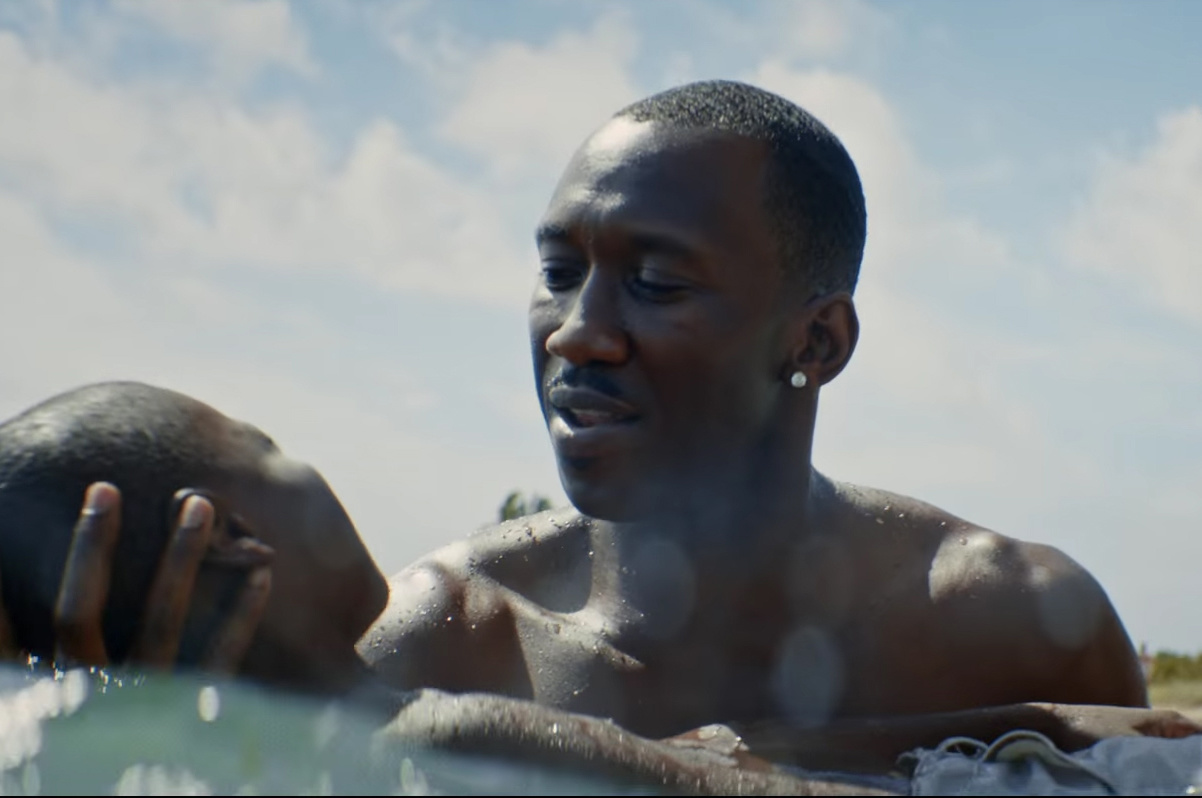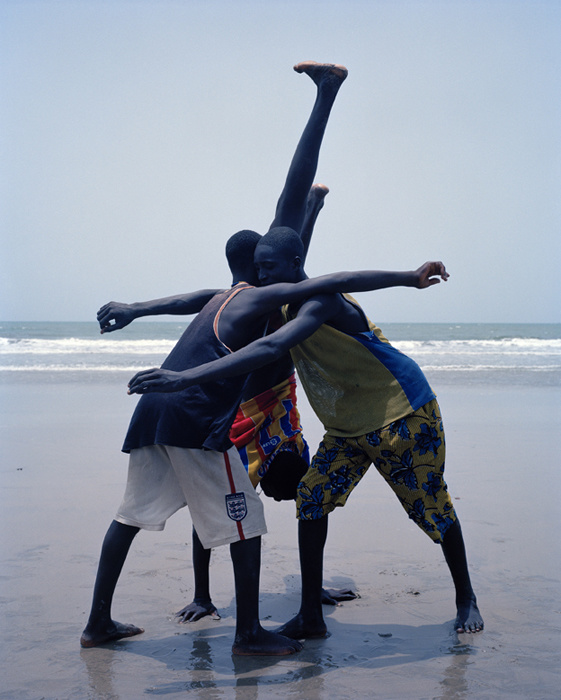On Sunday night, "Moonlight," Director Barry Jenkins' beautiful film about the coming-of-age of a young man dealing with issues of race and poverty, while simultaneously discovering his own relationship to sexuality, won the ultimate prize, the Best Picture trophy at the Academy Awards. LensCulture just posted a lengthy interview with the film's talented cinematographer, James Laxton. Here is a bit of what he had to say.
Lost among the decidedly historic debacle that was the conclusion of the Academy Awards of 2017, was a simple fact. “Moonlight,” the film that ultimately went home with the award for best picture (via the producers of "La La Land") was an amazing work of cinema.
Barry Jenkins and Tarell Alvin McCraney crafted a heartbreaking and illuminating screenplay depicting the coming-of-age of a young man facing what can be societal three strikes of being black, poor, and homosexual. But in telling the story of Chiron, the creative team went well beyond cliché.
The ultimate power of “Moonlight” lies not in the statistics, but in what lies between the lines. The intimacy with which the story is told allows a story of one very specific individual to be relatable to all in the audience. You don’t have to be black to understand his plight on an emotional level. You don't have to be homosexual. Nor does your empathy require you to hail from Miami. In fact, the film's cinematographer, James Laxton, whose beautiful lensing offers an inordinate amount of intimacy to the film, comes from another world altogether.

In a wonderful in-depth interview by Alexander Strecker for LensCulture, Laxton discusses his approach to the subject as well as the myriad of influences which helped to define the films visual style.
I’m a white guy from San Francisco, and I’m traveling across the country to a new place and a new community. I felt strongly it would be a disservice to show up and start capturing images left and right without knowing anything, without reflecting on who they are. Above all else, this was important for me on a human level — to engage with my subject personally before I started to capture it.
I seems like a straightforward statement, but I think in those words lies a certain truth about all art, moving or still. The fine line between very good and great often lies within one’s ability to go deeper than the surface. An artist needs to go beyond two-dimensional imagery, however beautiful it is on the surface, and delve down to a deeper level.
Understanding this, Laxton knew he needed to find another level. Operating as many great documentary photographers do, by going to Miami without his camera at first, he got to know the moods and the rhythms of the world he was being asked to reflect.
This extended further into production. While most films have clearly delineated lines between cinematographer and camera operator, the smaller scope and intimate detail of the project demanded that Laxton do a great deal of the operating himself.
Most important was his decision to shoot much of the film handheld. While this can be an overused technique in many films which seem to shake the camera just for the sake of shaking a camera, in "Moonlight," Laxton uses the freedom of the handheld camera to capture the in between moments that may not have made it into a perfectly still frame. He can move in and out during a scene. He can personally invade an actor's space. In short, he is not only shooting the conversation, but is part of the conversation.

A clear example of this is his approach to shooting the famous baptismal scene where Juan (played by Academy Award winner Mahershala Ali) teaches Chiron (or Little as he’s called during the opening act) to float. Rather than set up on sticks from the safety of dry land, Laxton got into the water with the actors. As they fought the rather real current of the Atlantic Ocean, so did Laxton. As they shared this intimate moment, so did Laxton. And, by extension, so did the audience.
The cinematographer goes on to mention the multiple sources of inspiration for the look of "Moonlight." Many of the inspired moving images were drawn from still images. One of the photographers mentioned was Earlie Hudnall Jr., who brings a beautiful authenticity to his work.

Street Champion, 4th Ward, Houston, TX 1986, Courtesy of Earlie Hudnall,Jr. and <a href="http://pdnbgallery.com/SITE/">PDNB Gallery</a>, Dallas, TX.

Mr. Shine, 3rd Ward, Houston, TX, 1988, Courtesy of Earlie Hudnall,Jr. and <a href="http://pdnbgallery.com/SITE/">PDNB Gallery</a>, Dallas, TX.

Flipping Boy, 4th Ward, Houston, TX, 1983, Courtesy of Earlie Hudnall,Jr. and <a href="http://pdnbgallery.com/SITE/">PDNB Gallery</a>, Dallas, TX.
Laxton was also heavily influenced by Vivianne Sassen, and her extraordinary colors.

Anansi by Viviane Sassen, Courtesy of <a href="http://stevenson.info/exhibitions-current">Stevenson Gallery</a>.
Speaking of color, he even drew inspiration from a source that will be close to the heart of any photographer. At least those old enough to remember. Film stocks. With the film’s story clearly separated into three separate acts which merge to form a complete story, Laxton chose to give each section it’s own unique look.
How did he draw the line? Cleverly, he decided to allow each look to be influenced by each of the three major film stock manufacturers Fuji, Agfa, and Kodak.
Fuji, which tends to lean towards blue and green made up the first section.



Not to say, by the way, that Laxton actually shot the film on film. Working with a number of non-professional actors and needing to be able to quickly capture unexpected moments, Laxton instead opted for digital (doing much of the aforementioned color work in post).
When you are rolling film, time is more precious. This creates a lot of pressure and intensity about what to capture in the frame. When you roll digitally, there is a bit of laxness — and in that space, you can find nuance, subtleties and moments of realism.
Whatever the medium, Laxton was able to find the intimacy and authenticity to produce images for what will no doubt become known as one of the more influential films in the long history of cinema. If you haven’t seen it, check it out. If you only watched the Oscar debacle and want to know what all the fuss was about, check it out. Or, if you’ve already seen the story of Little, Chiron, and Black unfold, give it a fresh look and admire how an outsider delivered one of the most insider portraits to ever go home with the Academy Award.
[via LensCulture]





